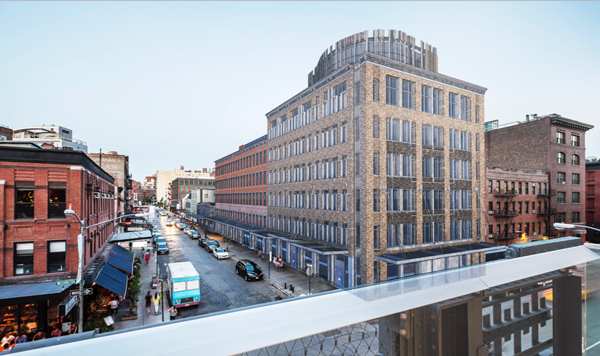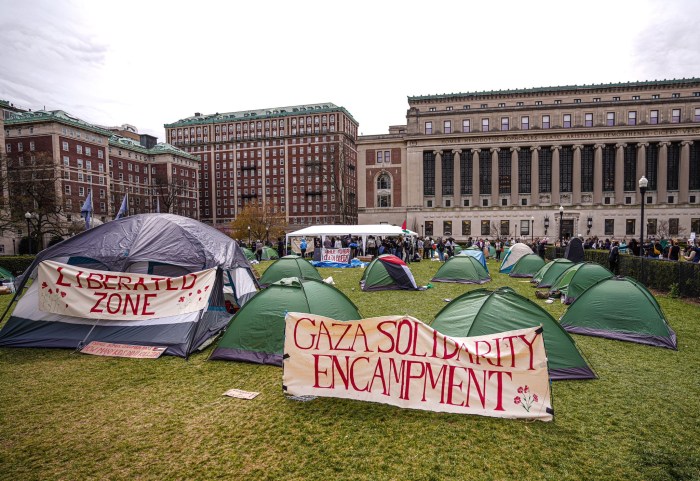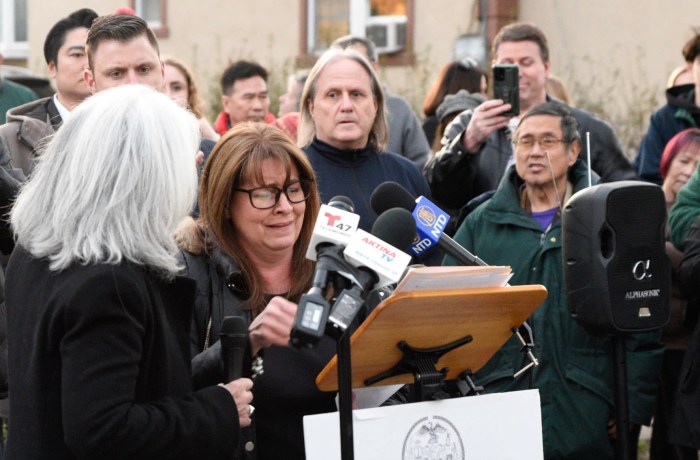BY LUCAS ROPEK | Updated Fri., Jan. 22: Since the announcement that Neil Bender of William Gottlieb Real Estate and Aurora Capital Associates plan to redevelop nine buildings on a block of Gansevoort St. in the landmarked Meatpacking District, the community response has been overwhelmingly hostile.
Many locals consider the block’s old brick buildings valuable artifacts of the neighborhood’s history, and believe that demolishing some of them and adding stories atop others — both are called for in the plan — would be a tragedy, not a triumph.
The Gansevoort developers are now being accused of using a push poll, in what appears to be the latest attempt to sway the community toward accepting their plan.
Push polling is a form of telemarketing disguised as a survey, in which a caller asks the listener a series of leading questions meant to influence his or her opinion on a particular subject.

The Gansevoort pollsters reportedly asked community members questions like, “Would you prefer to see a series of decrepit, partly demolished buildings, or a historically sensitive restoration of what Gansevoort St. looked like until the 1930s?”
Push polling is traditionally used during political campaigns to win votes and tar opposing candidates.
Andrew Berman, executive director of the Greenwich Village Society for Historic Preservation, and a vociferous opponent of the developments, made public the claims of polling at the most recent G.V.S.H.P. committee meeting. He reported that nearly a dozen concerned residents had reached out to him about the poll over the past week. Many of the polled weren’t persuaded, but rather, deeply “annoyed,” Berman said.
Katherine Schoonover, 62, a neighborhood resident who is also a G.V.S.H.P. trustee, received her call on Jan. 13, and was asked a series of questions related to the deal: Had she heard of the Gansevoort development plans? Would she rather see a beautiful restoration of pre-1930s architecture, or watch her neighborhood buildings quietly cave in on themselves from age?
When Schoonover rebuffed this line of questioning by asserting that they presented a false choice, the caller then dovetailed into a series of odd questions, including inquiries into her political affiliation, race, family size and also, apropos of nothing, “What do you think of Andrew Berman?” Schoonover assumes these were asked to gauge what factors might persuade her to support the project in the future.
The mentioning of Berman is not surprising given what a vocal opponent he’s been ever since the deal’s announcement. The preservationist calls the poll a “sign of desperation” and believes it only highlights the serious lack of public confidence in the developers’ plans.
For further evidence, Berman cites the many recent community meetings where residents have expressed disapproval of the scheme.
“There was an enormous turnout against the proposal at the Landmarks Preservation Commission public hearing,” he said, referring to the agency’s Nov. 10 hearing on the matter.
Indeed, if push polls are meant to persuade, this one seems to be doing it completely wrong.
“They were trying to push me but they didn’t succeed in changing my mind at all,” said Schoonover, who insists that her view of the project is still “entirely negative.” She also called the poll “deceptive” and a “pretty low way to go about doing things.”
As far as Villagers like Schoonover are concerned, the Gansevoort developers are clearly being far too pushy to win residents’ hearts and minds.
However, a spokesperson for the developers lashed back, saying it was not a push poll but, rather, merely “market research,” and that this research showed most neighbors actually back the project.
“As part of on-going market research,” Tom Corsillo said, “the sponsors of the proposal to restore partially demolished Gansevoort St. buildings to reflect the historic nature of the district surveyed area residents on a range of issues, including their view of the project. That research showed, among other things, that local residents support the redevelopment initiative by a 4-to-1 margin.”
The Villager asked Corsillo to provide a copy of the questions that were asked, but he did not do so, saying they were “proprietary.”

















